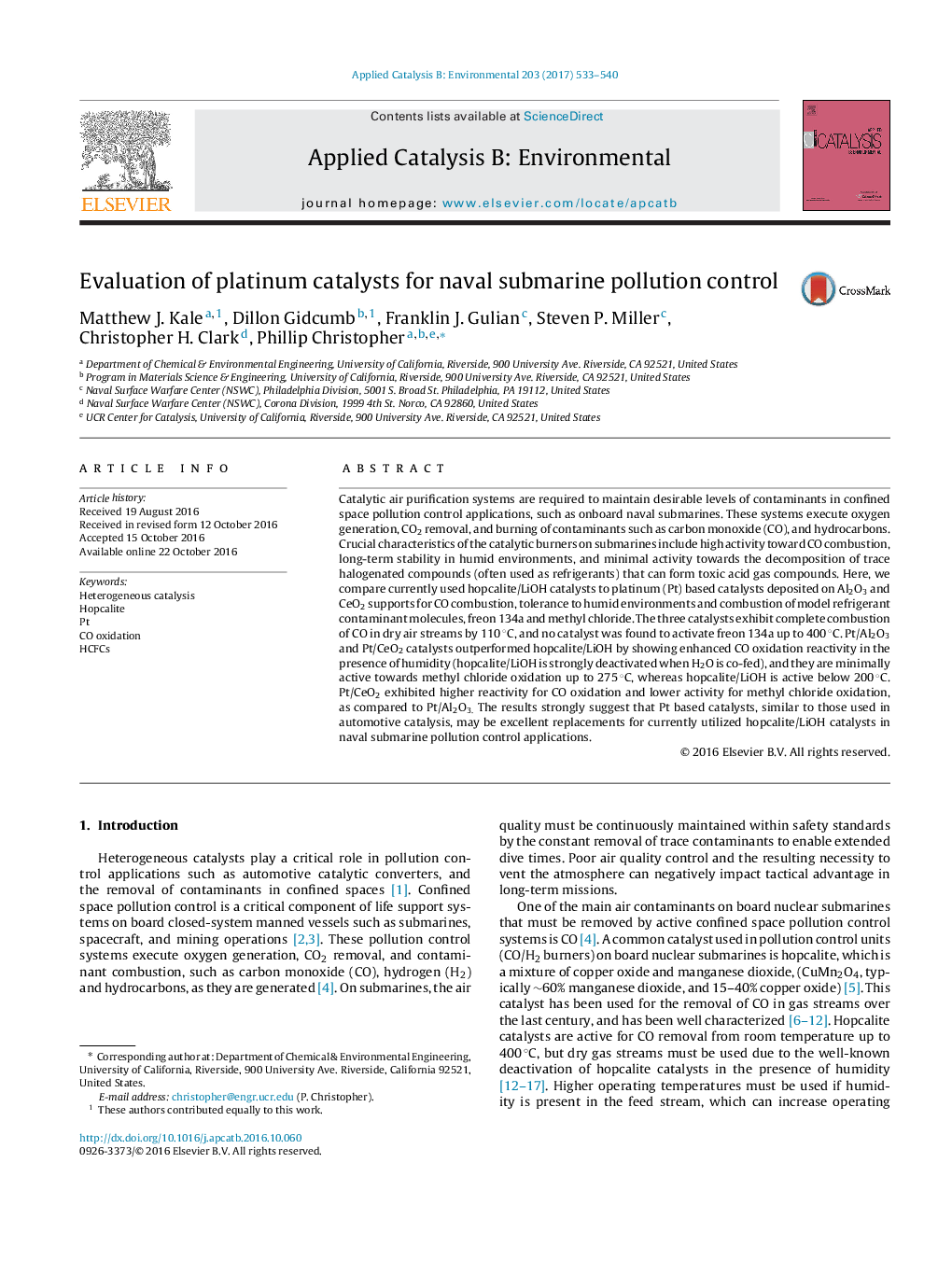| کد مقاله | کد نشریه | سال انتشار | مقاله انگلیسی | نسخه تمام متن |
|---|---|---|---|---|
| 6454516 | 1418817 | 2017 | 8 صفحه PDF | دانلود رایگان |
- Pt catalysts compared to hopcalite for Naval submarine pollution control.
- All catalysts exhibited low-temperature combustion of CO in dry air streams.
- Hopcalite was deactivated by presence of humidity; Pt catalysts were activated.
- Pt/CeO2 performed less HCFC oxidation than Pt/Al2O3 or hopcalite/LiOH.
- Pt outperforms hopcalite and should be considered for replacement.
Catalytic air purification systems are required to maintain desirable levels of contaminants in confined space pollution control applications, such as onboard naval submarines. These systems execute oxygen generation, CO2 removal, and burning of contaminants such as carbon monoxide (CO), and hydrocarbons. Crucial characteristics of the catalytic burners on submarines include high activity toward CO combustion, long-term stability in humid environments, and minimal activity towards the decomposition of trace halogenated compounds (often used as refrigerants) that can form toxic acid gas compounds. Here, we compare currently used hopcalite/LiOH catalysts to platinum (Pt) based catalysts deposited on Al2O3 and CeO2 supports for CO combustion, tolerance to humid environments and combustion of model refrigerant contaminant molecules, freon 134a and methyl chloride. The three catalysts exhibit complete combustion of CO in dry air streams by 110 °C, and no catalyst was found to activate freon 134a up to 400 °C. Pt/Al2O3 and Pt/CeO2 catalysts outperformed hopcalite/LiOH by showing enhanced CO oxidation reactivity in the presence of humidity (hopcalite/LiOH is strongly deactivated when H2O is co-fed), and they are minimally active towards methyl chloride oxidation up to 275 °C, whereas hopcalite/LiOH is active below 200 °C. Pt/CeO2 exhibited higher reactivity for CO oxidation and lower activity for methyl chloride oxidation, as compared to Pt/Al2O3. The results strongly suggest that Pt based catalysts, similar to those used in automotive catalysis, may be excellent replacements for currently utilized hopcalite/LiOH catalysts in naval submarine pollution control applications.
229
Journal: Applied Catalysis B: Environmental - Volume 203, April 2017, Pages 533-540
